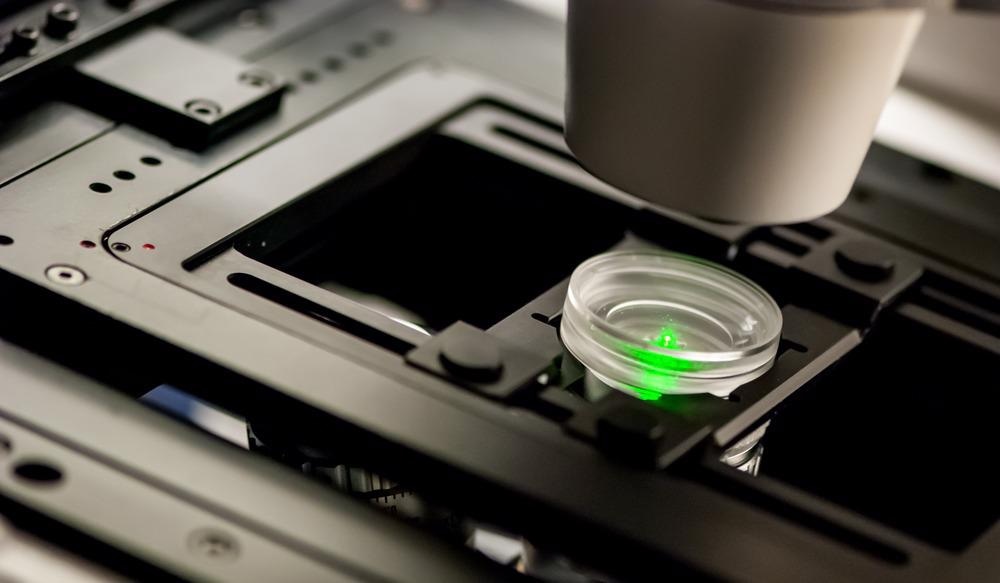
Image Credit: Micha Weber/Shutterstock.com
A description of a new approach to an important metrology technique was recently published by an international team of researchers. The new method uses X-ray laser light for transient grating spectroscopy for the first time.
Introduction
The technique was developed by a Switzerland-based team led by Cristian Svetina of the Paul Scherrer Institute (PSI) and Jérémy Rouxel of the EPFL. They also worked with colleagues in the US and Italy.
The new approach is to perform transient grating spectroscopy with X-ray lasers. This will allow scientists to detect and study atomic processes that take mere femtoseconds by recording them at atomic-scale resolution.
This is the first time that this materials characterization technique has been possible with X-ray laser light. It is the ultrafast frequency of X-ray light that enables transient grating spectroscopy to accurately record interactions at the atomic scale.
Now, the technique can be used to complement other materials imaging methods that work on the atomic scale of resolution, such as inelastic neutron and X-ray scattering.
Transient Grating Spectroscopy
In transient grating spectroscopy, two laser beams can detect atomic-level objects and events. The method is used for materials characterization in the field of metrology and is classified as a non-destructive investigative technique because the sample is not damaged in any way by inspection.
The two light beams create an interference pattern when they interact with one another. This is a function of light’s wave physics and is a similar phenomenon to the patterns caused by two or more wave directions meeting on a water surface.
Laser light beams create a temporary interference pattern when they interact with one another, which is also known as transient grating. Although the pattern moves, it also repeats at regular intervals. These repeated instances of the transient grating are also known as Talbot planes.
Placing a sample inside a Talbot plane created by two interfering laser beams allows metrologists to probe and study its material characteristics.
The space between lines in the interference pattern is a result of the wavelengths of the laser light sources which interact to create the pattern. Wavelengths from the visible to ultraviolet parts of the light spectrum create distances of hundreds of nanometres and larger between lines. As a result, features smaller than a few hundred nanometres are not detectable by transient grating spectroscopy with conventional laser light sources.
If light with a shorter wavelength is used for the laser sources, then the lines in the interference pattern are closer together. Therefore, using X-ray laser beams – for example – has been a focus on research in new spectroscopy methods.
Until now, it has not been possible to achieve transient grating spectroscopy with X-ray laser beams as light sources. This is due to the challenging aspects of crossing and positioning two beams from high-frequency X-ray lasers with enough precision to reliably generate transient gratings.
Overcoming the X-ray Challenge in Transient Grating Spectroscopy
Recent research shows that these difficulties can be overcome. The team was able to use X-ray lasers with a wavelength of just 0.17 nm for transient grating spectroscopy to characterize a sample of bismuth germanate at single atom scales of resolution.
This research could pave the way for transient grating spectroscopy to be used more in the microchip manufacturing industry. Chips are loaded with nanoscale features now, which manufacturers are still seeking to research and improve.
Transient grating spectroscopy at such small resolutions as this may also open up avenues of research in quantum physics. Heat transport in semiconducting materials, and the magnetization of computer bits, could be better understood with this new method of analysis.
References and Further Reading
Dumé, Isabelle (2021) Spectroscopy Technique Gets X-ray Vision. Physics World. [Online] https://physicsworld.com/a/spectroscopy-technique-gets-x-ray-vision/.
Disclaimer: The views expressed here are those of the author expressed in their private capacity and do not necessarily represent the views of AZoM.com Limited T/A AZoNetwork the owner and operator of this website. This disclaimer forms part of the Terms and conditions of use of this website.